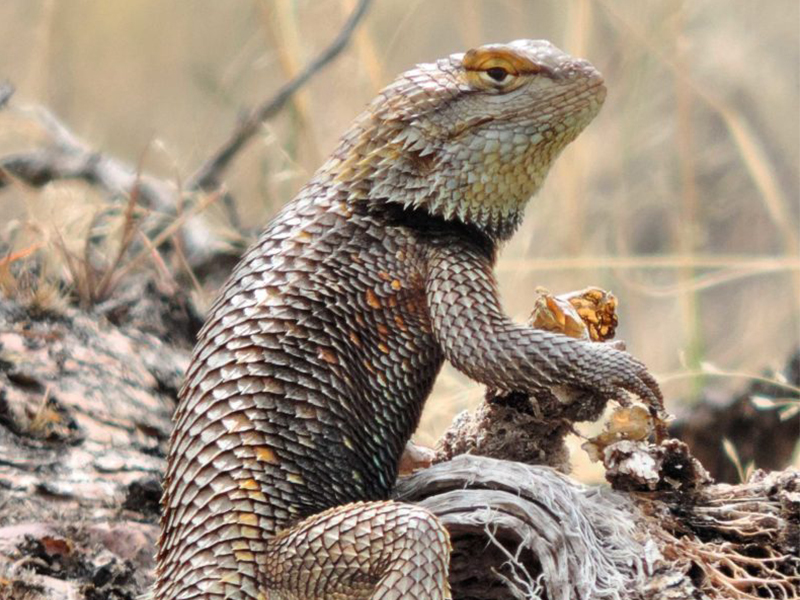Photo by Jim Rorabaugh
Excited shouts of, “Did you see that huge lizard?” often accompany a sighting of a desert spiny lizard. Frequently seen at Desert Botanical Garden, desert spiny lizards look like dinosaurs and can be as long as 11 inches from nose to tail tip.
They are active during the day from April to October. The males, with their bright blue throats and underbellies, are territorial and do push-ups to let those who intrude into their space know they’re getting too close. Their bright blue coloration is shown off with these push-ups which is as good as a come-hither look to females and serves to intimidate other male lizards.
Females develop a reddish to orange hue on their heads during breeding season, and yes, this is one redhead that is natural. Clutches of four to 20 eggs are laid in the summer and hatch in a little over two months. Young hatchlings are independent and, like their parents, will feast on insects, small spiders and smaller lizards.
While desert spiny lizards aren’t venomous, those jaws can pack a powerful bite! Similar to several other species of desert-adapted lizards, desert spiny lizards change their color to reflect or absorb radiant heat, appearing lighter when the desert heats up and darker when temperatures are cooler. As a member of the reptile family, desert spiny lizards can’t regulate their body temperature, so they play it cool by hanging out in the shade during the hottest part of the day or seeking shelter underground.
